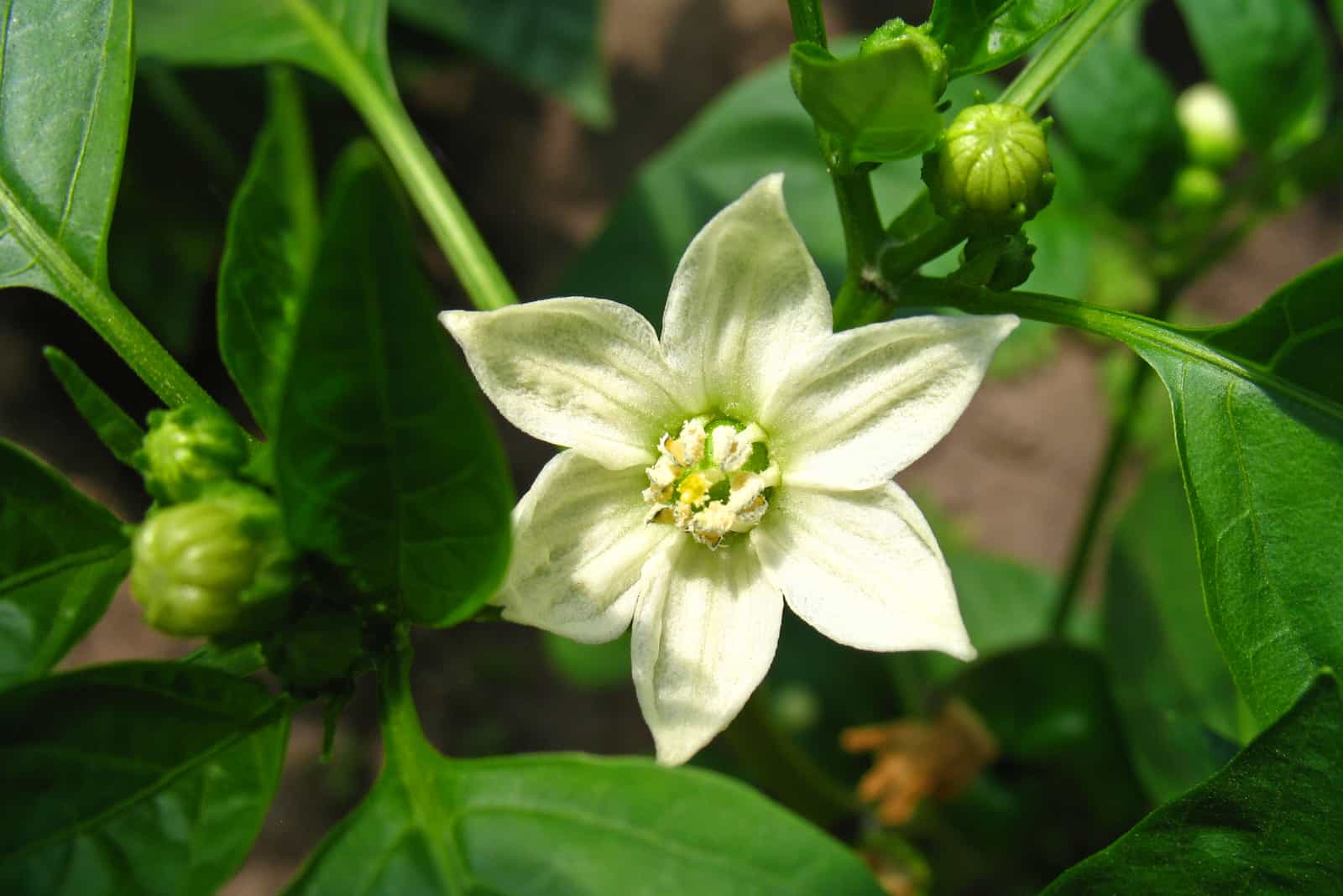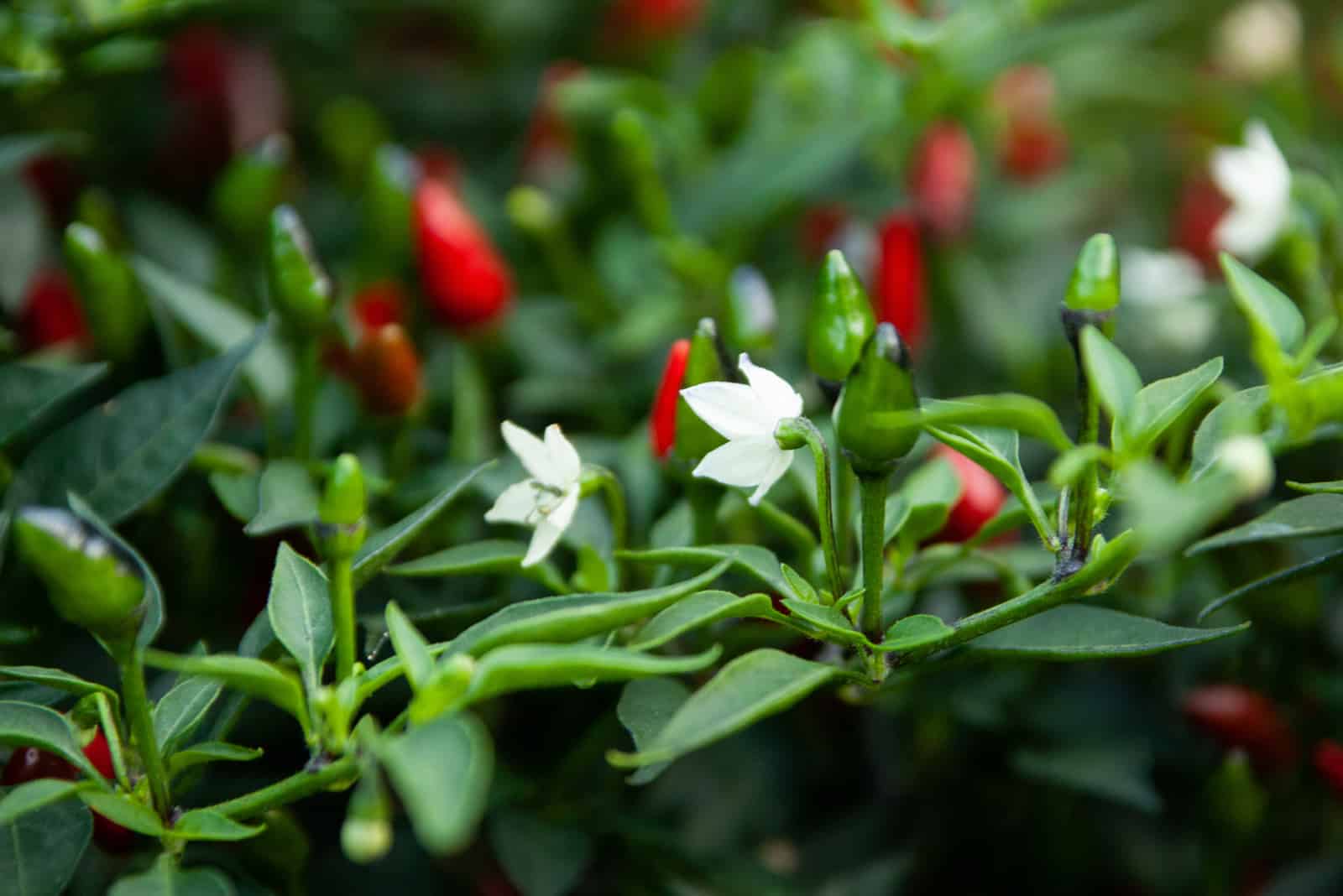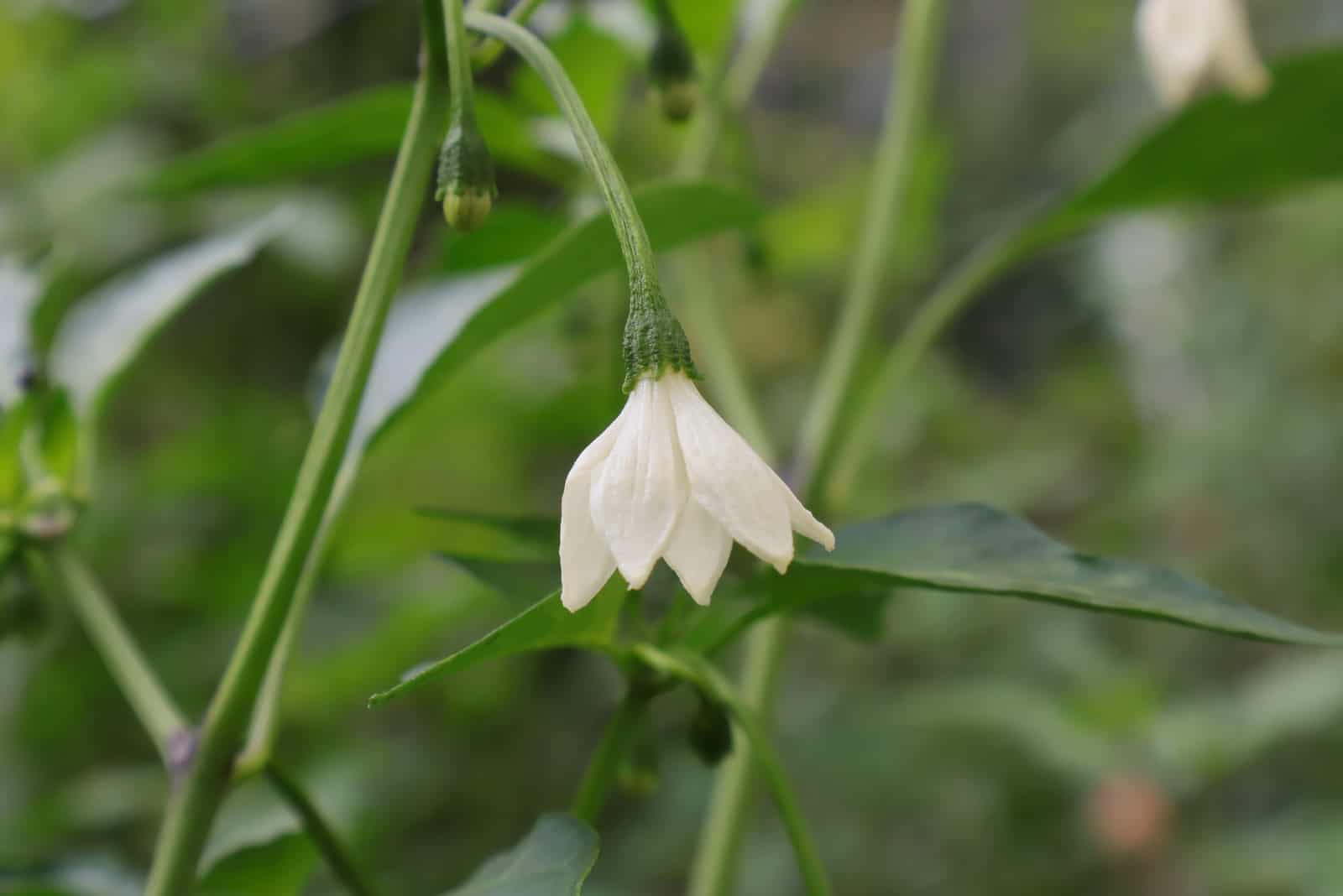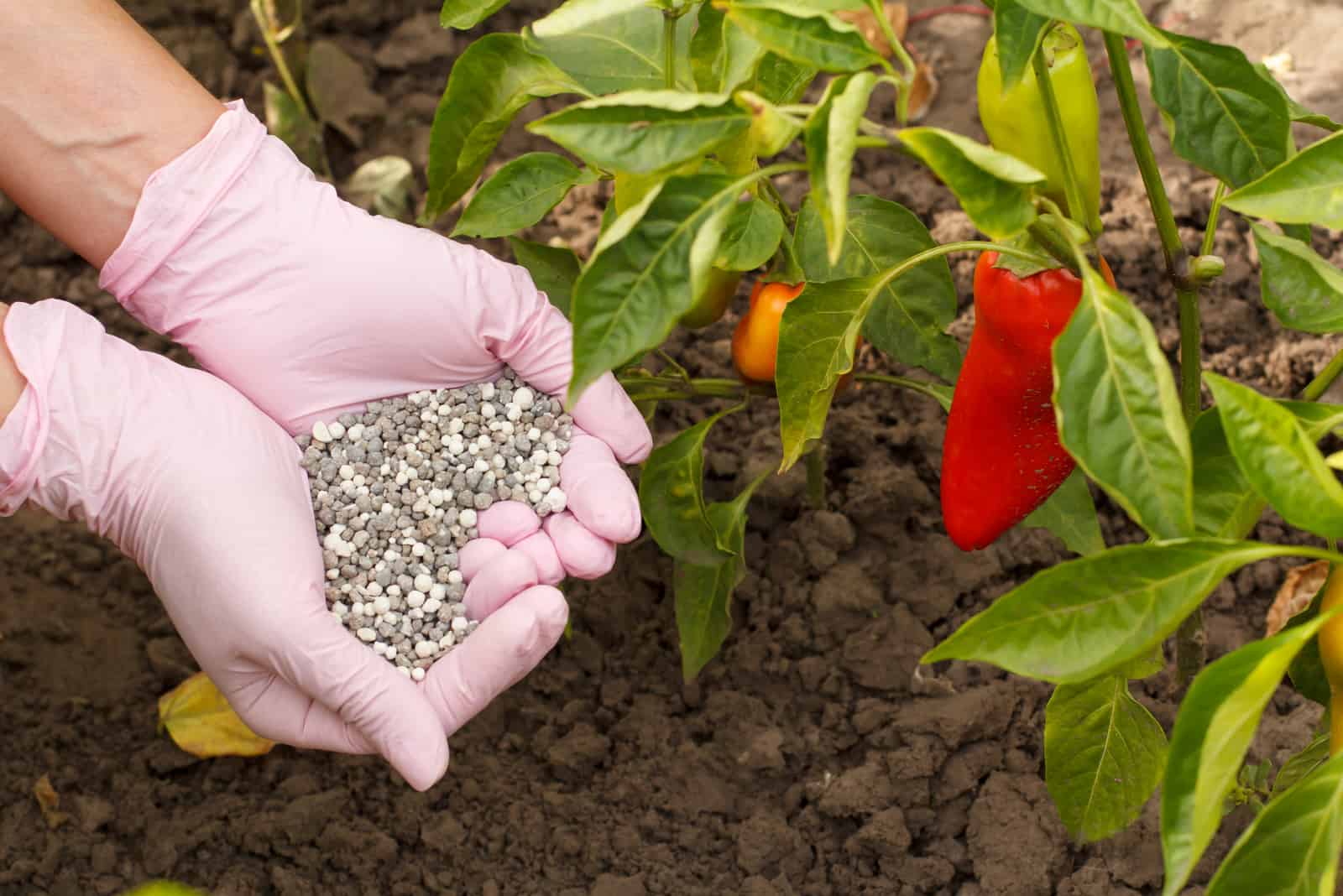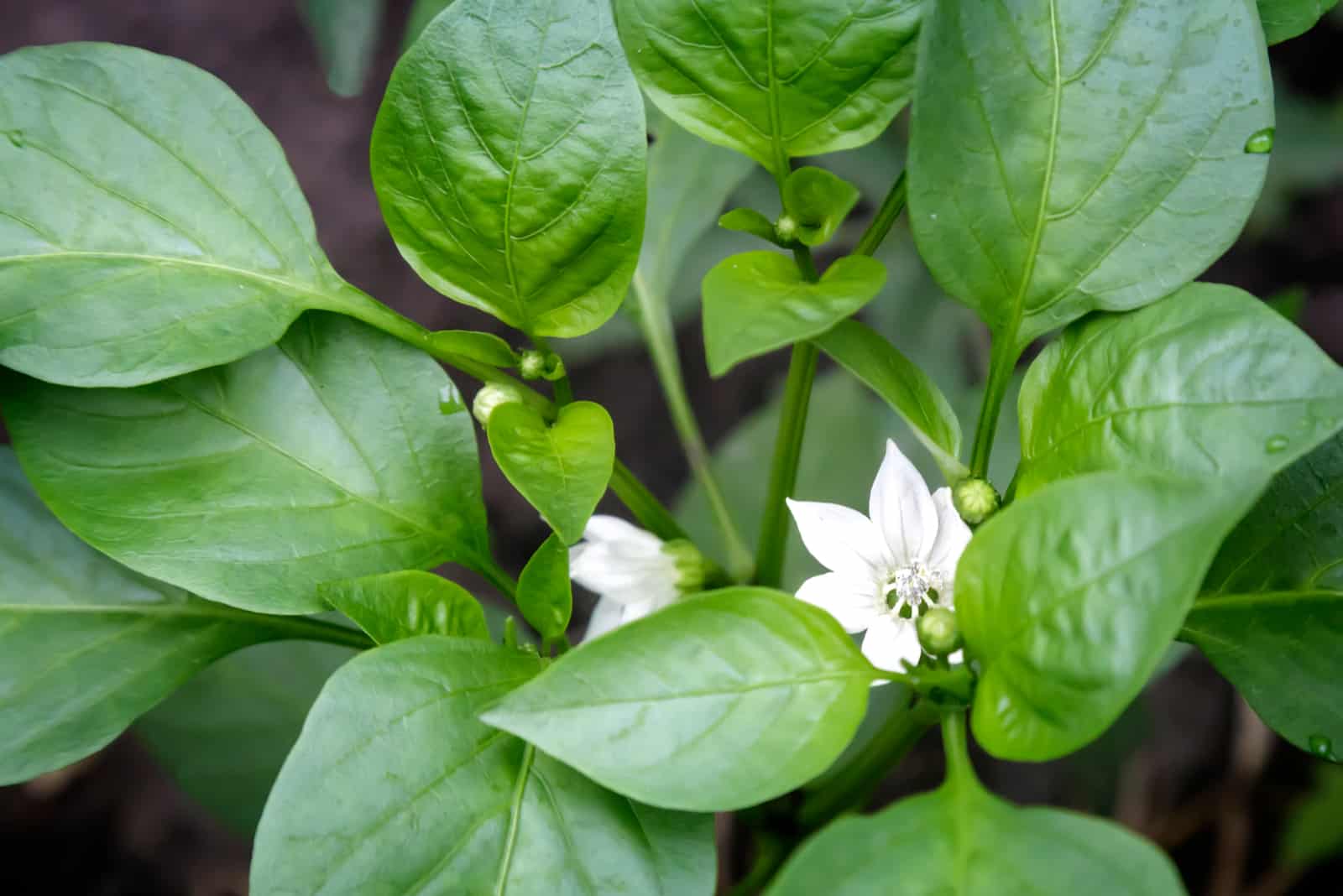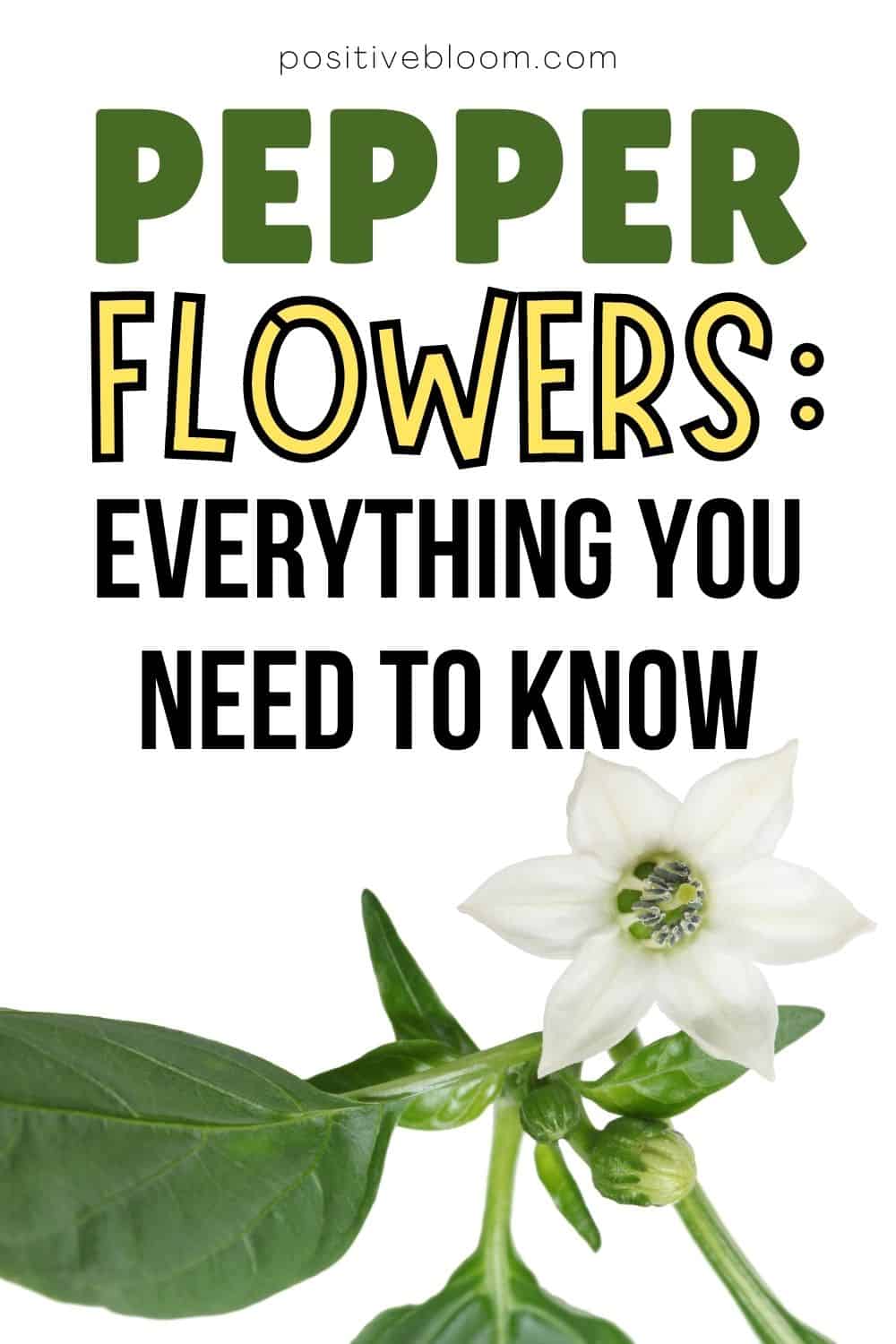At the beginning of your gardening journey you will have so many questions! What type of soil to use? When to plant? Do you prune certain plants? What even is pruning?
Don’t worry, we’ve all been there. There’s so much information about every type of plant you could possibly want to grow out there though!
If you are planning on growing peppers, read on to discover everything you need to know about peppers and pepper flowers.
What Is a Pepper Flower?
Don’t be surprised to see delicate, white or purple flowers on your pepper plants . This just means that your plant has entered a new growing stage !
Peppers are a member of a flowering plant family called Capsicum, so it’s perfectly normal for flowers to appear on them. This family consists of 30 pepper species, each cultivated for their delicious fruit.
The most commonly grown peppers are bell peppers, which provide you with lots of vitamins and nutrients. These peppers are usually harvested when they’re green, although they can change color to yellow, orange, and red – depending on the level of ripeness.
Why Do Pepper Plants Grow Flowers?
Flowers appear either to make room for peppers to grow, or because they need assistance with pollination. Peppers are angiosperms, which means they produce flowers and grow seeds in their fruit.
They can self-pollinate because they have both male and female organs, which means they can cross-pollinate.
Cross-pollination occurs when birds or insects spread pollen from flower to flower and cause fertilization.
Do pepper flowers turn into peppers?
Yes. Flowers will eventually turn into fruit, which is a commonly used term in gardening that refers to the part of a plant that is fleshy and contains seeds.
One plant can produce several fruits. You can harvest the peppers as long as the plant is flowering.
Sometimes flowers will appear, but sadly the peppers are nowhere to be found.
This doesn’t mean that you are bad at gardening; however you should investigate whether the temperature is adequate or if you are overwatering your plants.
Sometimes, air circulation is inadequate or the area lacks bee population so pollen isn’t transmitted as it should be, which can lead to poor pollination and eventually to failure of the crop.
How long after flowering do peppers appear?
You can expect your peppers to start growing two weeks after the appearance of the first flower. You will see little flowering buds ready to spring to life.
It usually takes about 55 days for a pepper to reach its full-size, although some of them may still be unripe. You can harvest them immediately to stimulate more flowering. Their growing season is long, and you can expect more flowers to appear throughout the season.
It can really depend on the type of pepper plant. For example, Capsicum annuum peppers, which include Cayenne, Jalapeno, and the Bell pepper plant, typically need about 50 days to grow a flower bud, while others like Ghost peppers need much more time to produce.
The quickest pepper plant to produce flowers is The Sweet Chocolate Bell Pepper plant. This plant is ready to be harvested after 57 days.
Should I Pinch My Pepper Flowers?
You definitely should! Not only does pinching off the flower yield more harvest, but it can also redirect the energy to growing more ripe and mature fruit.
If the pepper plant flower starts growing early in the season, it would be best to pinch them off as the plant will otherwise bloom prematurely and be unable to sustain its fruit.
So, when you remove the flowers your plant will focus on root system growth, which will provide a good foundation for fruit production.
When it comes to indoor plants, they will produce pepper seedlings which should be removed before transferring them to the garden.
Continue removing early flowers so your plant can adapt to its new environment.
When Should I Stop Pinching My Pepper Flowers?
There are a few factors that should be taken into consideration when it comes to pinching pepper plants. First, inspect the size of your plant.
If your plant has grown to around 30 cm in height, it can be considered mature enough to sustain its fruit.
You should be aware of how much time there is left in the growing season. If you have about two months left, I would suggest you stop pinching them and let the chillies grow.
Reasons Pepper Blossoms Fall Off
You want to have as many flowers on your plant as possible because more flowers mean more peppers. If your pepper blossoms fall off during the growing season, it will negatively affect your harvest, so let’s look at some factors that influence plant growth.
1. Temperature is too hot or too cold
Pepper varieties have different preferences when it comes to temperature. They are very sensitive to temperature, and they change their behavior in accordance with it.
For instance, Jalapeno peppers enjoy high temperatures, while others like chili peppers prefer a more chilly temperature – usually from 21 to 31 degrees Celsius.
Nighttime temperatures also affect growth: bell-peppers love temperatures between 16 to 24 degrees Celsius. I guess I’m not the only one who hates being cold at night!
2. You could be overwatering
Overwatering is a common mistake beginner gardeners make. Yes, plants do need water; however too much water suffocates the root system, which can lead to root death.
You may notice this by observing the leaves and checking whether they have turned yellow, which is usually an indicator of overwatering.
These plants prefer drier soil to wet soil. Good drainage is also very important.
3. Overfertilization
Once your plant enters a new stage of growth, its requirements for fertilization change. When flower buds appear, you should switch to lower nitrogen fertilizers instead of high nitrogen.
Excessive nitrogen and a lack of potassium can lead to pepper blossoms falling off, and you end up with a plant with more leaves than flowers.
You should pay close attention to its leaves – if the plant is being overly fertilized, the edges of the leaves will change color from yellow or brown.
4. Container size
Pepper plants adapt to their environment, which means that if you plant them in smaller pots they will produce as many flowers as they think they are capable of.
A huge difference can be seen when compared to growing them in larger pots or outside because they have much more space and nutrients, and so are able to produce more fruit.
How To Prevent Pepper Flowers From Falling Off
I’m sure you want to grow as many peppers as possible, so check out these tips and tricks to prevent flowers from falling off.
• Do your research. If you know what type of pepper plant you are growing, then you will need to accommodate its needs.
For instance, if you want to grow sweet peppers but you live in a cold area, what should you do?
Simply grow them in a greenhouse where they can get enough warmth to produce flowers.
• Use an appropriate amount of fertilizer that contains phosphorus, potassium, and a small amount of nitrogen.
This will aid overall development and promote flower growth.
• In addition to fertilizer, you can also cover the soil with mulch in order to prevent weed growth and preserve the moisture, which will retain moderate soil temperature.
• Larger containers will yield a lot of fruit because plants adapt to their surrounding environment.
Use pots that have holes at the bottom for drainage to avoid overwatering.
Should I Prune My Pepper Plants?
Yes. You should definitely prune yellow and rotten leaves every week in order to avoid common fungal diseases.
In addition to this, you should also get rid of any leaves that are in direct contact with the soil.
Don’t worry, new leaves will grow back!
Pruning is helpful because it can improve the overall health of your plant and its fruit.
Make sure you clean your pruning equipment with disinfectant so you don’t spread any viruses to another plant. This is one of the most common reasons plants die. Seriously, tobacco mosaic virus is like COVID for plants.
Here is a useful video on how to prune pepper plants to get more peppers in one season:
How Do I Harvest Peppers?
Harvesting is the final stage of your gardening journey. There is no better feeling than harvesting fruit from the plants you planted and nurtured yourself – it feels like you are capable of doing anything!
It means you have mastered the gardening process, and you should be proud of yourself.
If you are excited about your peppers and want to try them as soon as possible, then you can harvest them once they are big enough to eat or you can wait for them to become fully mature and get sweeter or spicier (depending on the type you planted).
When it comes to the harvesting itself, you can use pruning equipment or a knife to cut the peppers.
The more peppers you cut, the sooner new flowers and fruits will grow! This is why plucking them by hand is a bad idea as it can result in broken branches.
You should also wear gloves, especially when dealing with hot peppers! They can burn your skin or eyes if you accidentally rip them. It’s no wonder pepper spray is a popular self-defense tool.
What Are Pepper Flowers Good For?
The white flowers that decorate your vegetable garden during the growing season are actually edible! They can be plucked and eaten raw, or you can sprinkle them on your salad.
I don’t know about you, but I definitely wait for my flowers to turn into peppers because I absolutely LOVE them, and I eat them every day!
Can I get pepper seeds from pepper flowers?
No, you can’t, but you can grow peppers from seeds which are collected from mature peppers. These seeds can be stored after they have been collected, or they can be immediately planted into little pots.
If you are planning on storing them, make sure to put them in a dark and dry area. You can use either glass jars or plastic bags to store the seeds, and leave them in freezers for a very long time.
Just take them out of the freezer and leave them at room temperature when you want to plant them.
Conclusion
Pepper flowers should be nurtured with great care to help them go through their beautiful transformation, which results in delicious peppers. Be careful when plucking the flowers so you don’t damage the rest of the plant.
Pepper plants are perfect for beginner growers. They don’t have any special requirements and just need full sun and a little water once in a while.
There are over 30 different pepper plant species that can be grown, with each having its own unique and delicious taste.
You can plant either hot or sweet peppers, or both; it’s completely up to you!
Until next time!
Like this post? Share or pin it for later!


